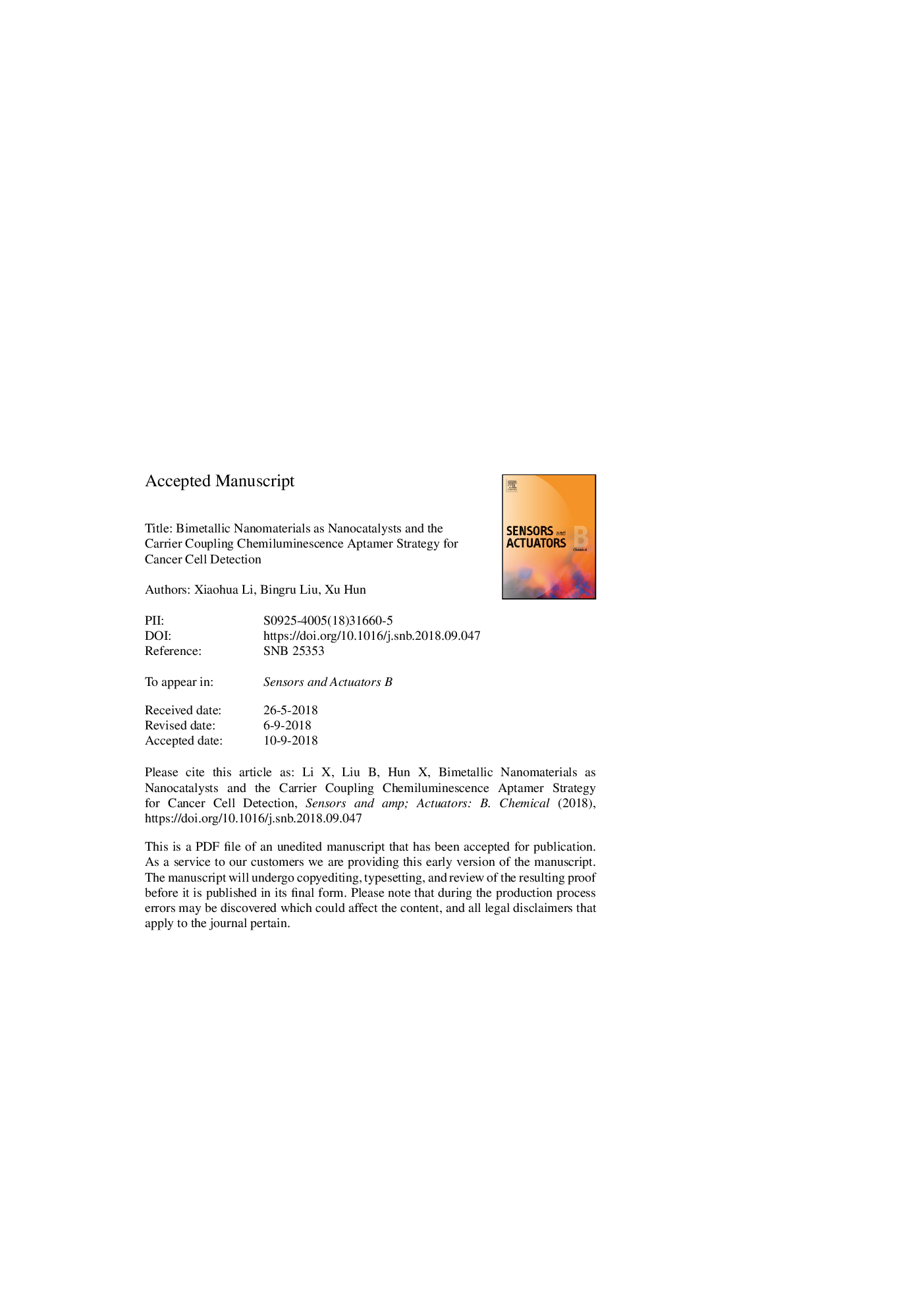| Article ID | Journal | Published Year | Pages | File Type |
|---|---|---|---|---|
| 10146676 | Sensors and Actuators B: Chemical | 2018 | 29 Pages |
Abstract
Cu/Co bimetallic nanomaterials (BNMs) were synthesized firstly. The chemiluminescence (CL) catalytic properties of BNMs were investigated systemically. Experimental results revealed that combined Cu with Co could cause a 67.9â±â3.5% increase in the CL intensity because of a great synergic catalytic effect. Based on this interesting phenomenon, a steric hindrance strategy for cancer cell detection was fabricated. BNMs were used as nanocatalysts and the carrier modified with capture DNA. In presence of CCRF-CEM cell, sgc8 aptamer and probe DNA recognized with CCRF-CEM. And the bio bar code CCRF-CEM cells were formed. After bio bar code CCRF-CEM cells hybridized with capture DNA which modified Cu/Co BNMs, CL probe was introduced. The CL intensity is linearly related to the concentration of cell from 500 to 100,000 cells/mL. The detection limit is 270 cells/mL and the relative standard deviation is 3.9% at a level of 1000 cells/mL (nâ=â9). This method was successfully applied to the determination of cell in spiked real human serum. Due to its sensitivity and selectivity, this method offers a promising approach for the detection of cell and other biomolecules.
Related Topics
Physical Sciences and Engineering
Chemistry
Analytical Chemistry
Authors
Xiaohua Li, Bingru Liu, Xu Hun,
